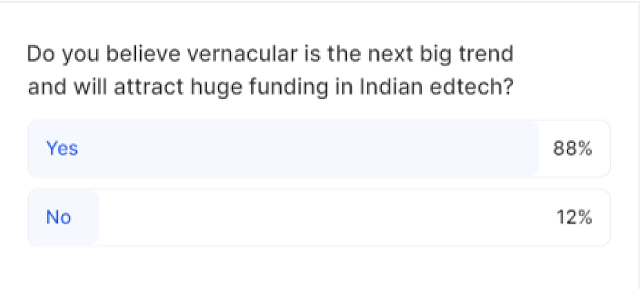
88 per cent of people who answered believe vernacular is the next big trend and will attract massive funding in Indian edtech
And lastly, 50 per cent of people are exploring vernacular play for their edtech products, and 44 per cent would like to explore further for such products in the edtech ecosystem.
Gaps in Indian education & what can be filled by vernacular education play
Rahul Maheshvari started by sharing his take on the overarching key challenges facing the education ecosystem. He says, “Major factors for the gaps in the education ecosystem are governments budget on education that can be somewhat sorted by private intervention.” The other key challenge is the lower enrolment ratio in India. He also highlighted a key trend in automation of jobs, especially the blue-collar and grey collar jobs; which makes upskilling inevitable and fundamental to the economy’s growth. “The gaps in the current upskilling segment have tremendous potential to be solved by vernacular education to be able to meet the modern education needs of the people by eradicating the language barriers”, he added.
Gouri Gupta added to the session by highlighting the importance of foundational literacy and numeracy. She says, “Technology and vernacular play have the power to support the government in achieving foundational literacy and numeracy by providing high-quality solutions for children to use at home and schools.”